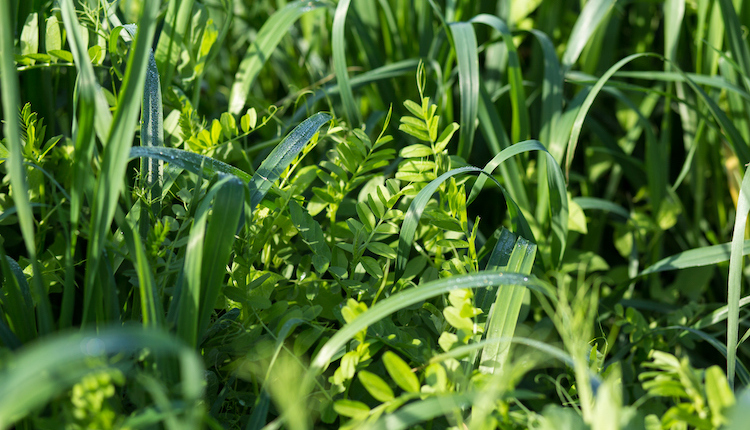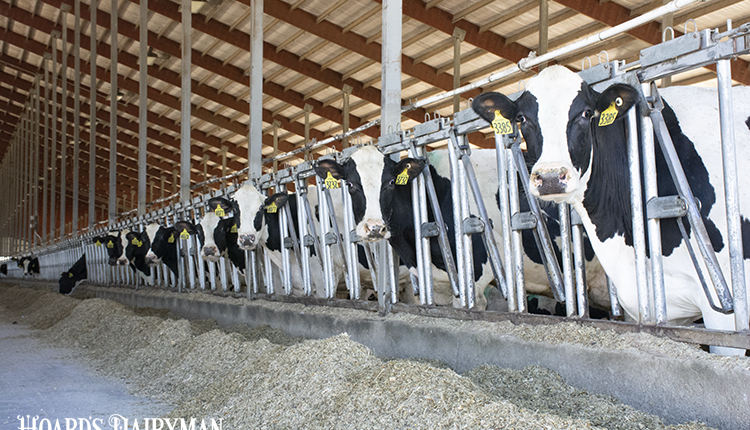
Feeding cows is expensive. Financial reports continuously show that dairy farmers spend more money on grain and feed purchases than anything else. While eliminating grain purchases is unrealistic, improving the yield and quality of home-grown forages can drastically reduce the need for feed purchases and improve your bottom line.
One approach to boosting the yield and quality of forage stands is to broadcast a little extra seed to thicken the stand or change the species composition. This practice is called frost seeding, and I have seen several farms do it successfully year after year.
The goal is usually to add more legumes to a legume/grass mix that is in decline. If successful, the additional legume biomass boosts the protein content and lowers the fiber. The technique also helps to fill in any weak or bare spots due to winterkill, wheel traffic, or diseases.
If you don’t mind the cold, frost seeding is about as easy as it gets. Simply broadcast forage seed over your frozen fields whenever it is convenient in late winter or early spring. The spring freeze-thaw cycles and mixed precipitation help nestle the seeds into the top layer of soil, where they can germinate as soon as conditions are favorable.
Once the seeds germinate, it will take some time for them to get established. You shouldn’t expect much change in yield or composition until the second or third cut of the seeding year. Taking the first cutting a little early can actually help the seedlings establish by reducing competition and leveling the playing field for the establishing forage plants.
When it comes to species selection, the rule is “the quicker it establishes, the better.” This makes red clover the optimal legume and annual ryegrass the optimal grass for frost seeding. Red clover is also preferred for frost seeding alfalfa stands since alfalfa seeds won’t grow where there is already alfalfa. Just don’t wait till the last minute to buy seed since it looks like red clover seed supply may be tight this year.
As far as seeding rate goes, it isn’t rocket science. Less bare soil calls for less seed, and more bare soil calls for more seed. Look up the recommended broadcast rate for whatever you are planting and adjust accordingly based on the condition of the stand and how much your seed is worth to you. Applying half the recommended broadcast rate is a good place to start for most situations.
One of the biggest arguments against frost seeding is that some seeds inevitably fall in places where they are bound to be outcompeted. While many farmers see this as a waste of seed, I view it more as a cost of doing business. What frost seeding lacks in seed use efficiency, it makes up for in labor and equipment use efficiency. With a reduced seeding rate, frost seeding an existing stand can cost less than a single herbicide application, which would likely be needed to rotate or replant the field anyway. Assuming a hay value of $125 per ton and annual ryegrass at $1 per pound, you would only have to improve the productivity of a hay field by one-tenth of a ton per acre to pay for the cost of the seed — and that’s over multiple cuttings. Anything you get above that is money in the bank and milk in the tank.








